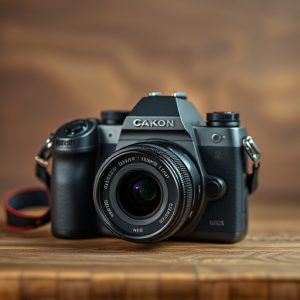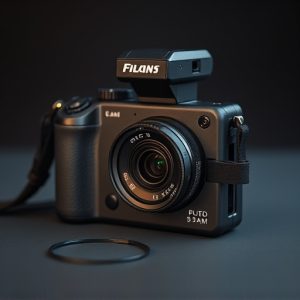Choosing the Right Body Cameras for Law Enforcement: Market Navigation, Tech Trends, and Compliance Guidelines
Law enforcement agencies must carefully select body cameras for sale that meet their operational ne…….
Law enforcement agencies must carefully select body cameras for sale that meet their operational needs, considering factors such as environmental resistance, high-definition recording capabilities, privacy and data security compliance, interoperability with existing systems, and overall cost efficiency. These advanced devices not only offer improved transparency and accountability but also ensure officer safety, with features like real-time streaming, incident detection sensors, night vision, two-way audio communication, and AI analytics. It's crucial for agencies to establish clear policies that balance legal compliance with privacy laws and to provide comprehensive training on ethical usage. Regular software and firmware updates are necessary to maintain functionality and security in line with evolving laws and technologies. By adhering to best practices and staying informed on legal standards, law enforcement can effectively use body cameras for sale to enhance accountability, public trust, and respect individual privacy rights while ensuring recordings are justified for law enforcement purposes. Transparency in activation policies is key to uphold these principles in the use of body cameras for sale within modern policing.
law enforcement’s embrace of technology has been marked by the integration of body cameras. These devices not only enhance accountability and transparency but also serve as a critical tool in daily operations. In this comprehensive guide, we delve into the market dynamics of purchasing body cameras for sale, highlight the latest technological advancements, and outline best practices to maintain legal compliance. Whether you’re a law enforcement agency looking to equip your officers or an individual seeking a reliable model, understanding the intricacies of these devices is paramount. Join us as we navigate the complexities of selecting the right body camera technology that aligns with both operational needs and legal standards.
Navigating the Market: Factors to Consider When Purchasing Body Cameras for Law Enforcement
When law enforcement agencies consider integrating or upgrading their body camera systems, navigating the market requires careful deliberation to select the most suitable options. Body cameras for sale vary significantly in terms of features, quality, durability, and functionality. Firstly, it’s crucial to assess the environment in which these devices will be used. Factors such as weather resistance, battery life, and image clarity become paramount in outdoor or demanding settings. The resolution and field of view are also critical considerations; high-definition recording can capture details vital for evidence collection and accountability, while a wider field of view ensures capturing the broader context of interactions.
Moreover, privacy regulations and data security protocols must be top priorities when selecting body cameras. Ensure that the devices comply with legal standards and offer robust data protection measures. Additionally, the ability to integrate with existing systems or software platforms within your law enforcement operations is a significant advantage. Interoperability can streamline evidence management and improve overall efficiency. Lastly, the cost of ownership, including initial purchase price, subscription fees (if applicable), maintenance costs, and training for officers, should be weighed against the devices’ capabilities to ensure a cost-effective investment. Considering these factors will guide agencies in purchasing body cameras for sale that best fit their operational needs and budget constraints.
Feature Highlights and Technology Trends in Modern Law Enforcement Cameras
Modern law enforcement cameras have evolved significantly, incorporating advanced features and technologies that enhance transparency, accountability, and officer safety. Among the most prominent developments are body cameras for sale, which are compact, durable, and equipped with high-definition recording capabilities. These devices capture clear footage from the perspective of an officer on the ground, providing a firsthand view of interactions with the public. A key highlight is their ability to record continuously or activate upon specific triggers, such as when an officer activates their light and siren or engages in a use-of-force incident. This selective recording minimizes data storage requirements while ensuring critical moments are preserved.
Furthermore, the latest models of body cameras for sale come with features like real-time video and audio streaming to command centers, enabling real-time strategic decision-making. They also boast integrated sensors that can detect gunshots or falls, automatically tagging and storing these incidents for later review. Night vision capabilities allow for effective recording in low-light conditions, ensuring 24/7 coverage. Additionally, many of these cameras support two-way audio communication, allowing officers to verbally interact with subjects while maintaining a hands-free operation. The integration of artificial intelligence algorithms is another trend, offering real-time analytics to assist in evidence gathering and situational awareness. As these technologies continue to advance, body cameras for sale are becoming increasingly sophisticated tools for modern law enforcement agencies.
Compliance and Best Practices: Ensuring Your Body Camera Deployment Adheres to Legal Standards
Body cameras have become a cornerstone in modern law enforcement, offering a transparent record of interactions between officers and the public. To maximize their effectiveness while maintaining legal compliance, agencies must integrate these tools with clear policies that adhere to privacy laws and departmental regulations. When deploying body cameras, it is imperative to establish protocols that govern when, where, and how recordings are initiated and managed. This includes ensuring that officers receive comprehensive training on the ethical use of body cameras for sale, which are increasingly available in the market. Such training should cover scenarios that necessitate recording, data storage considerations, and protocols for accessing and sharing footage. Additionally, agencies must remain vigilant about software updates and firmware upgrades to maintain the functionality and security of these devices. Compliance with legal standards is not a one-time effort but requires ongoing evaluation and adaptation as laws and technology evolve. By embracing best practices and staying informed on legal requirements, law enforcement can leverage body cameras effectively, enhancing accountability and public trust. Agencies must also be transparent in their policies regarding the activation of cameras during interactions to ensure that recordings are made only when necessary for law enforcement purposes, thus safeguarding the privacy rights of individuals while capturing critical events for review and oversight.


